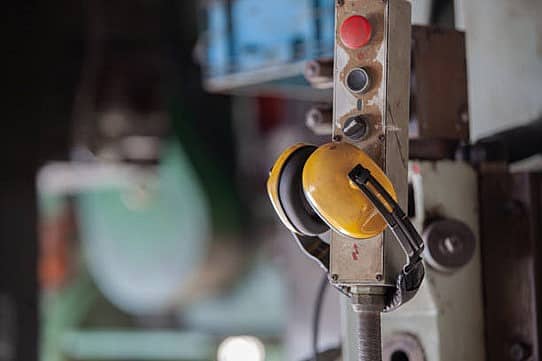OSHA announced this week that starting on May 17, 2022, it will begin the enforcement phase of its emphasis program to prevent workplace hearing loss. Although the focus of the program is on manufacturing industries, occupational hearing loss is a widespread concern. OSHA, has reported that more than 30 million workers in the United States are exposed to hazardous noise each year, and thousands of workers suffer from preventable hearing loss due to workplace noise levels.
Even laboratories have equipment that can generate high noise levels. For instance, elevated noise levels can result from sonicators (especially when used in cold rooms), high-speed centrifuges, fans and compressors, air cleaning and supply equipment, and vacuum pumps, as well as fume hoods and biosafety cabinets.
Hazardous noise levels in the workplace are a serious concern that not only can result in hearing loss, but can also contribute to other causes of physical stress as well as mental stress and lower employee productivity.
How do you determine if your workplace may require a hearing conservation program? According to NIOSH, if you have to raise your voice to speak to someone an arm’s length away in any area of your facility, the noise levels may be loud enough to cause hearing loss.
OSHA regulations on Occupational Noise Exposure specifically require employers to implement a hearing conservation program whenever employee noise exposure equals or exceeds an 8-hour time-weighted average (TWA) sound level of 85 decibels (dBA). The OSHA permissible exposure limit (PEL) for noise is 90 dBA as an 8-hour TWA.
Several sound-measuring instruments are available to measure noise levels. These include sound level meters, noise dosimeters, and octave band analyzers. In addition, NIOSH has developed a Sound Level Meter App that can be downloaded on mobile iOS devices and used to measure noise levels.
If noise levels are determined to be high, how can they be reduced? Like many occupational injuries, work-related hearing loss is preventable when controls are implemented, proper protection is provided and required standards are followed.
There are three main approaches to reducing noise exposure in the workplace: engineering controls (e.g. equipment enclosures), administrative controls (e.g. rotating duties to decrease exposure time), and personal protective equipment (e.g. earmuffs, earplugs).
To learn more about OSHA’s enforcement program on noise-induced hearing loss, or for information on noise monitoring and determining whether or not a hearing conservation program may be needed at your workplace, please email us at [email protected].
This blog was written by Beth Graham, Associate Director of Quality, Research, & Training at Safety Partners.


